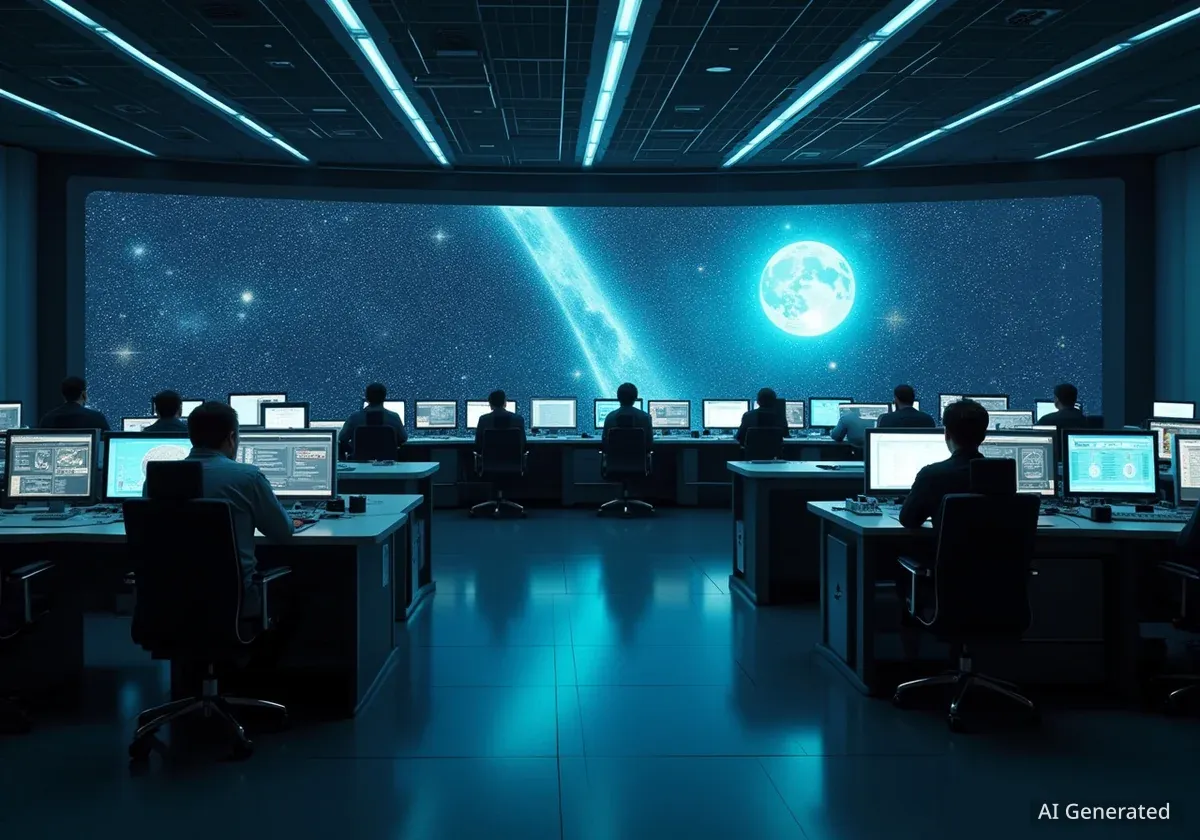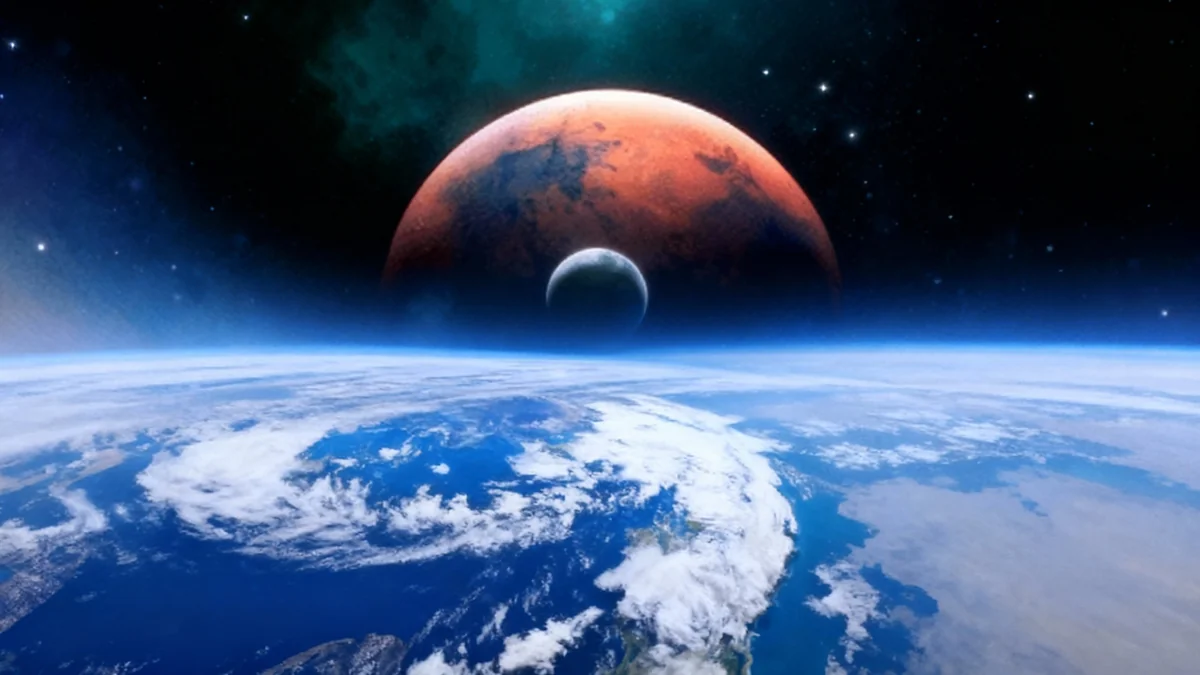NASA is preparing for a potential federal government shutdown, an event that would halt the majority of its operations and furlough most of its workforce. While critical functions like supporting astronauts on the International Space Station will continue, the shutdown threatens to delay key research and future missions, including preparations for the upcoming Artemis 2 lunar flight.
Key Takeaways
- A government shutdown would force NASA to furlough most of its employees, with estimates from past events suggesting up to 95% of the workforce could be sent home without pay.
- Essential operations, including the safety of astronauts on the International Space Station (ISS) and the monitoring of critical spacecraft, will be maintained by a skeleton crew.
- The upcoming Artemis 2 mission, which will send astronauts around the Moon, is expected to continue work under a safety-critical exception.
- Most research, hardware development, and non-essential science activities would be paused, leading to potential delays and increased costs for numerous projects.
Widespread Furloughs and Paused Operations
If Congress fails to pass a funding bill by the end of the fiscal year on September 30, a government shutdown will be triggered, forcing most U.S. federal agencies to cease non-essential activities. For NASA, this means the vast majority of its civil servant employees would be placed on furlough, meaning they are sent home and barred from working, even on a volunteer basis.
During the 2018 government shutdown, approximately 95% of NASA's workforce was furloughed. A similar scenario would leave only a small fraction of staff on duty to manage essential tasks. Agency offices and laboratories would close, bringing a stop to most research, development, and administrative functions.
What is a Government Shutdown?
A U.S. government shutdown occurs when Congress fails to pass funding legislation to finance government operations for the upcoming fiscal year. During a shutdown, all non-essential government services are suspended, and federal employees in non-essential roles are furloughed.
Impact on Contractors and External Partners
The effects of a shutdown extend beyond NASA's direct employees. The agency relies heavily on a network of contractors who support its missions. The outcome for these workers can be complex. Some may continue their duties for a short period if their contracts are already funded. However, many would be sidelined due to a lack of access to NASA facilities or the inability to coordinate with their furloughed government counterparts.
A small number of contractors would be tasked with performing an "orderly shutdown" of systems before they too are forced to stop work. This disruption halts the progress of hardware testing, technology development, and the construction of future spacecraft until funding is restored.
Protecting Mission-Critical Assets
NASA's shutdown contingency plan prioritizes the protection of life and property. A core group of essential personnel would remain active to ensure the safety of astronauts aboard the International Space Station and to monitor spacecraft already in orbit. According to NASA's guidelines, only "activities which are necessary to prevent harm to life or property" are exempt from the shutdown.
"All essential and safety-critical NASA activities will remain operational," NASA officials confirmed in a statement to Space.com ahead of a potential shutdown.
This includes maintaining continuous support for the ISS crew and monitoring satellites that provide vital data for weather forecasting and climate science. These operations are deemed too critical to pause, as a lapse in monitoring could have significant consequences or result in the loss of valuable assets.
Continuous Operations in Space
The International Space Station has been continuously crewed since November 2000. Maintaining the safety of the astronauts and the integrity of the station is NASA's top priority during any terrestrial disruption, including a government shutdown.
The Status of the Artemis 2 Moon Mission
One of NASA's most anticipated upcoming missions is Artemis 2, which is scheduled to fly four astronauts on a journey around the Moon. This will be the first crewed lunar mission since the Apollo program ended in 1972. Preparations are at a critical stage, with a potential launch date as early as February 5 of the following year.
Despite the widespread work stoppage, NASA officials expect to secure an exception to continue preparations for Artemis 2. The agency argues that the mission's complexity and the involvement of a human crew make ongoing work essential for safety.
Lakiesha Hawkins, NASA’s acting deputy administrator for exploration systems, addressed the issue at a press conference. She expressed confidence that the mission would be shielded from the shutdown's effects.
“This is obviously very safety-critical, and we anticipate being able to request, and being able to continue to move forward on Artemis 2 in the event of a shutdown,” Hawkins said.
Any significant delays in the preparation schedule could push the launch further into its designated window, which extends to April. An exception allows engineers and mission planners to continue their work, minimizing the risk of costly delays to the high-profile mission.
Long-Term Consequences and Financial Pressures
While essential missions are protected, a shutdown still causes significant disruption. The pause in research and development can create a backlog of work, leading to delays and increased costs once normal operations resume. Projects in early stages of development are particularly vulnerable, as momentum is lost and timelines are extended.
This potential shutdown arrives at a challenging time for NASA, which is already navigating a difficult budget environment. The agency is preparing for potential budget cuts and has been directed to consider reductions in force (RIFs), a term for layoffs. A prolonged shutdown would add another layer of uncertainty for its workforce, combining the stress of furloughs with existing concerns about job security.
The cumulative effect of these pressures could impact NASA's ability to execute its ambitious long-term goals, from lunar exploration with the Artemis program to robotic missions exploring the solar system and beyond. The immediate halt in activity creates a ripple effect that can be felt for months or even years after funding is restored.





